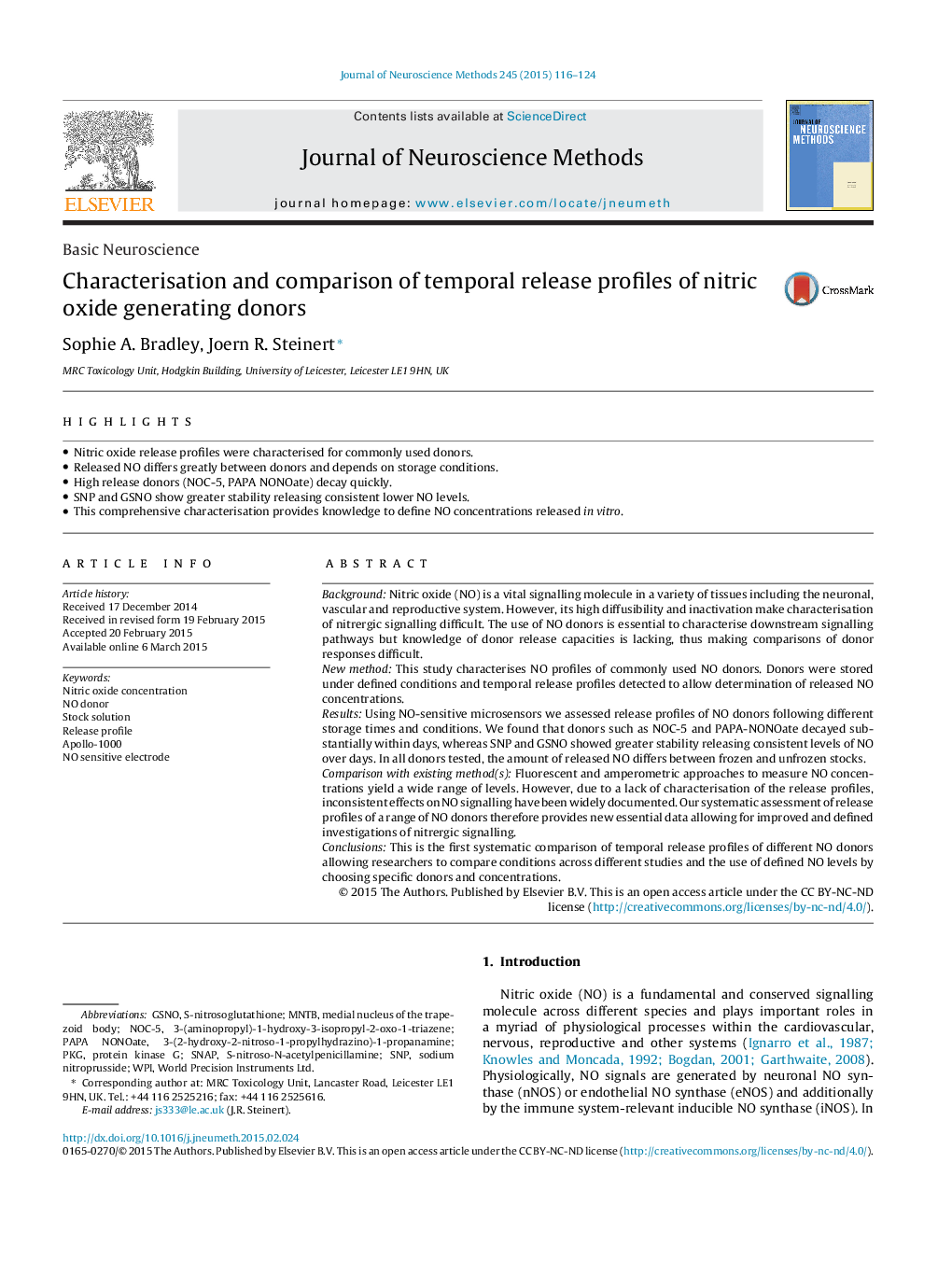| کد مقاله | کد نشریه | سال انتشار | مقاله انگلیسی | نسخه تمام متن |
|---|---|---|---|---|
| 6268275 | 1614624 | 2015 | 9 صفحه PDF | دانلود رایگان |
- Nitric oxide release profiles were characterised for commonly used donors.
- Released NO differs greatly between donors and depends on storage conditions.
- High release donors (NOC-5, PAPA NONOate) decay quickly.
- SNP and GSNO show greater stability releasing consistent lower NO levels.
- This comprehensive characterisation provides knowledge to define NO concentrations released in vitro.
BackgroundNitric oxide (NO) is a vital signalling molecule in a variety of tissues including the neuronal, vascular and reproductive system. However, its high diffusibility and inactivation make characterisation of nitrergic signalling difficult. The use of NO donors is essential to characterise downstream signalling pathways but knowledge of donor release capacities is lacking, thus making comparisons of donor responses difficult.New methodThis study characterises NO profiles of commonly used NO donors. Donors were stored under defined conditions and temporal release profiles detected to allow determination of released NO concentrations.ResultsUsing NO-sensitive microsensors we assessed release profiles of NO donors following different storage times and conditions. We found that donors such as NOC-5 and PAPA-NONOate decayed substantially within days, whereas SNP and GSNO showed greater stability releasing consistent levels of NO over days. In all donors tested, the amount of released NO differs between frozen and unfrozen stocks.Comparison with existing method(s)Fluorescent and amperometric approaches to measure NO concentrations yield a wide range of levels. However, due to a lack of characterisation of the release profiles, inconsistent effects on NO signalling have been widely documented. Our systematic assessment of release profiles of a range of NO donors therefore provides new essential data allowing for improved and defined investigations of nitrergic signalling.ConclusionsThis is the first systematic comparison of temporal release profiles of different NO donors allowing researchers to compare conditions across different studies and the use of defined NO levels by choosing specific donors and concentrations.
Journal: Journal of Neuroscience Methods - Volume 245, 30 April 2015, Pages 116-124
